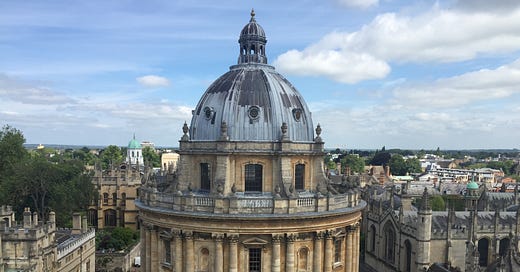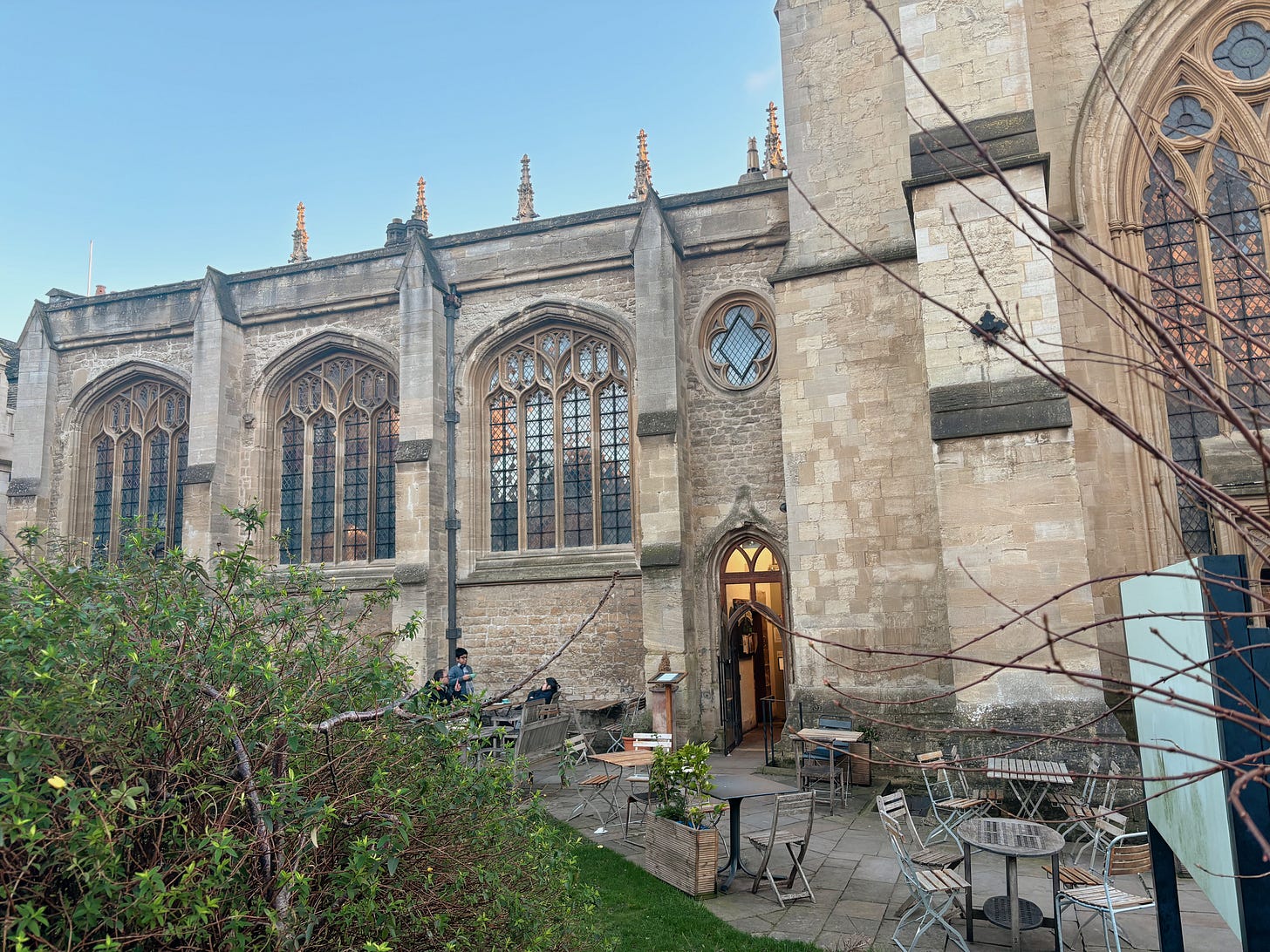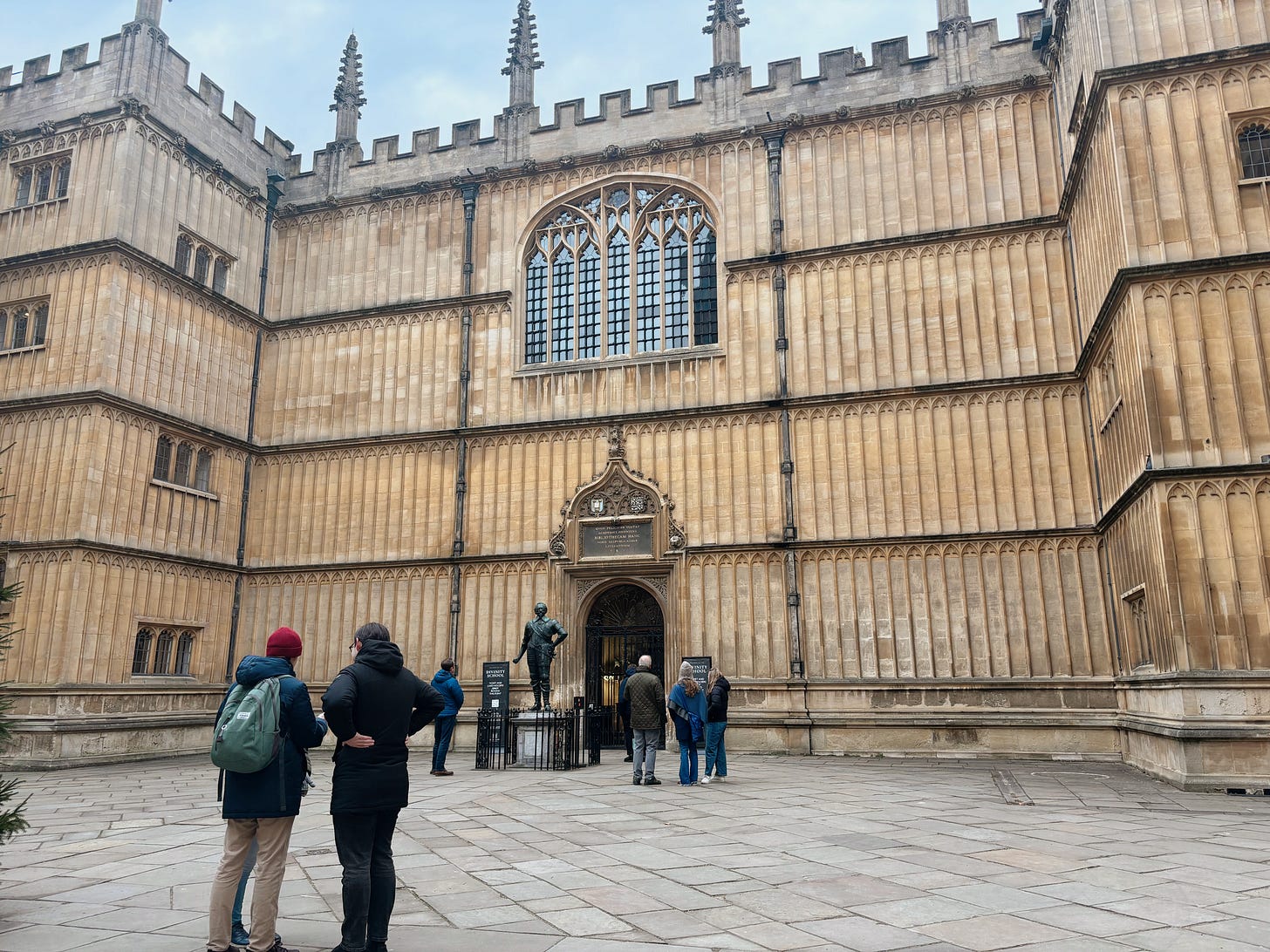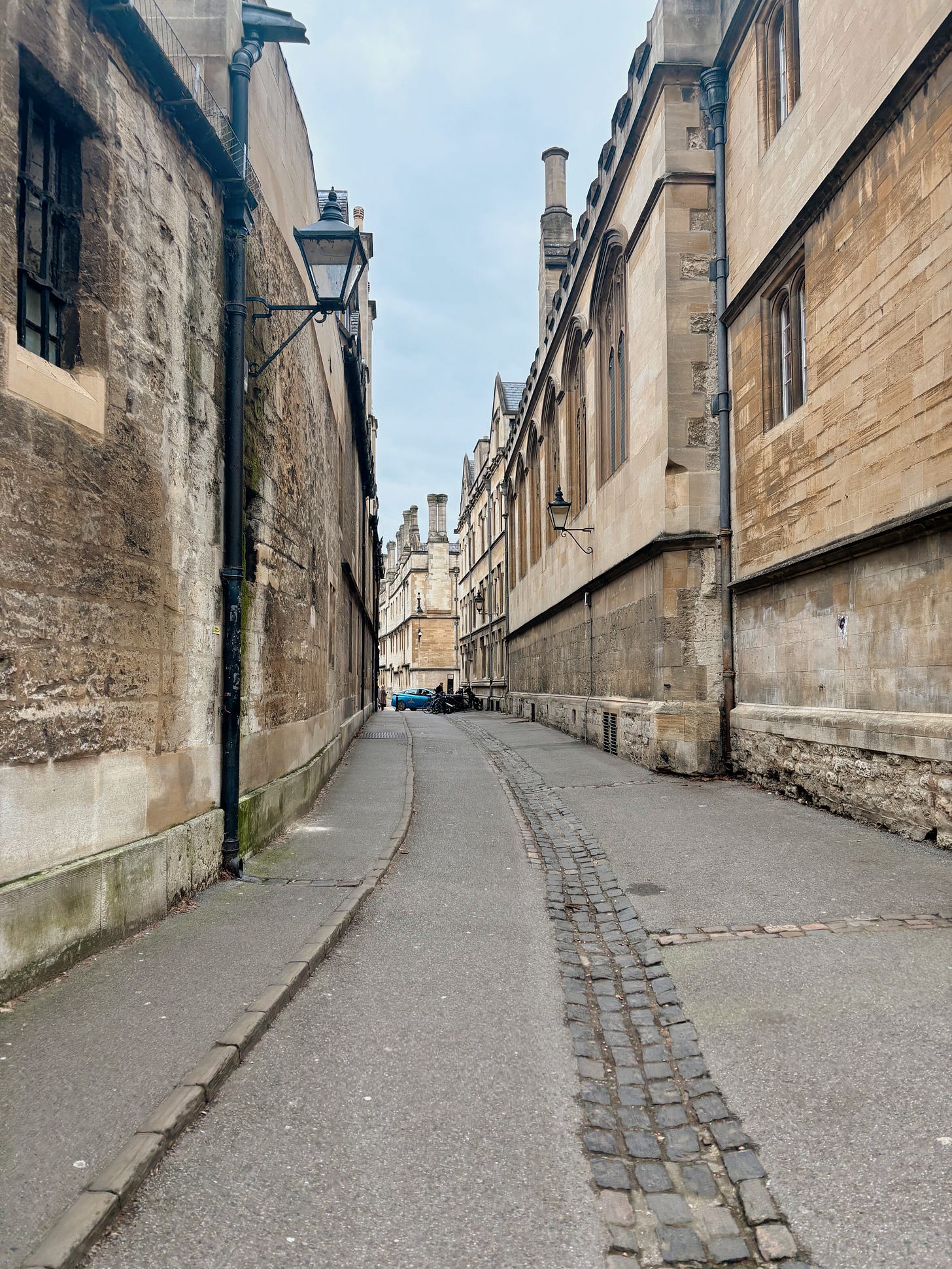Oxford. Oxenaford. Literally, a shallow place in the river where oxen could cross.
From The Museum of Oxford1
These are humble etymological origins for what has become known as the city of dreaming spires.
Yet they are origins that can be walked today, retracing the steps of ancient men and women with our own feet.
Will you allow me to be your tour guide?
As 2025 took its first few breaths, I found myself in Oxford’s Bodleian Library, taking advantage of a child-free 24 hours to mine the university’s deposits of ancient manuscripts and archaeological reports for my DPhil. This was not my first time in the city, thankfully; I was privileged to call this place home for four years while studying for my BA History and subsequent teaching degree.
Come with me as I show you what I consider to be Oxford’s Top Three Historical Moments, photographed during my recent visit.
For those who are new here, I recently began studying for a DPhil in Archaeology - my dream for almost twenty years - at the University of Oxford, part-time. I can’t share much about the content of the DPhil until it is complete, but it is diving deep into medieval women’s history, my absolute passion.
Want more than just the historical from our tour?
There’s a bonus section at the end sharing all I got up to beyond the historical, including my favourite coffee spots should you ever find yourself in Oxford.
University Church of St Mary the Virgin
Let’s begin where it all began!
Although it’s unclear when the University actually came into being, the University Church of St Mary the Virgin did host its earliest scholarly meetings. Much of the architecture of the original Anglo-Saxon church has since been replaced, but the two-story fourteenth-century extension photographed below, which includes the space now known as ‘the Vaults’, was used by the university parliament plus contained the university’s first ever library.
The Bodleian Library
The Bodleian Library (or, more correctly, libraries as it is known today) is one of the largest libraries in England, serving as a copyright library for every text published in England. From its humble beginnings in the Church of St Mary the Virgin above, it now boasts millions of books stored in multiple locations. Its most famous building though?
It has to be the Old Schools Quadrangle (pictured below).
Built just over 100 years after the end of the medieval period, the Old Schools Quadrangle is one of Oxford University’s crowning architectural jewels. Intended originally to host the University’s teaching programme, these were moved to the University Schools building further down the High Street to make room for a growing manuscript and book collection.
Students today (myself included!) still read and work in the very rooms their forebears studied in centuries ago, that sense of history palpable at each turn.
Brasenose Lane
If you’ve ever watched an episode of Inspector Morse, Endeavour, or any other TV show set in Oxford, it’s likely that you’ve seen Brasenose Lane.
It’s iconic.
And it’s easy to see why, with its high stone walls, medieval-style windows, and crenellated rooftops, just a stone’s throw from the cobbled Radcliffe Square and the Old Bodleian Library. The archaeologist in me also can’t help pointing out the multiple phases of building work evident in the varied levels of weathering on these buildings. Those phases speak of the actions of the real life people who walked this street hundreds of years ago: they knocked down, they built, they worked the stone, they fitted glass into the windows.
What would you add to my top 3 Oxford historical moments?
Have you visited before? What did you think of the city? What did I miss?
Add your thoughts in the comments or share them by restacking this post through the Substack app.
Bonus! Oxford beyond the history
Coffee recommendations, my trawl of the most wonderful new-to-me book shop, and a peruse of the medieval England exhibit at the Ashmolean Museum.








